Abruzzo’s aromatic liqueurs, namely its digestifs or amari, enjoy a fabled reputation for their complex, aged flavours but, to be honest when I was first offered the traditional and complimentary parting Genziana toast by an agriturismo owner on my first sip, I struggled to suppress a shudder…
Genziana is a potent digestif (the colour of which reminds me of 1980s peroxide hair) infused from the dried gnarled roots of the protected gangly La Genziana Maggiore. You’ll be able to spot these yellow flowers if you go up into the Apennines. They can stand up to 1.5 metres high and have multiple sickle-shaped flower heads all way up the stem. If you have a taste for cocktails, you’ll have unknowingly tried it as it’s the primary ingredient in Angostura Bitters. The drink even garnered some fame in socio-economic circles for its ability to combat malarial fevers which until the 1950s still had a hold on Italy.
In the same way that I acquired a passionate taste for rapini (turnip greens) and endive, I also began to appreciate Genziana as a cathartic tummy tonic for those like myself of weak resolve and unable to say “no thank you” when in Abruzzo. I also found it a quick way to warm up on a chilly winter’s night when celebrating being ‘snowed in’ and without power, or to grasp in a gloved hand at one of the winter-pagan-meets-Christian-bonfire sagre & festivals that are a great antidote to stave off deep dark winter mountain depressions. An enticing recipe tip is by producer Infusi dall’Eremo who recommends mixing Genziana with peach juice as a marinade for roast duck.
Easier on the taste-buds is the sugar-free emerald green Centerbe. As its name suggests, this intoxicating infusion comprises 100 wild herbs foraged up high in the Morrone & Maiella mountains depending on the time of the year. It was originally made at the C9th San Clement Abbey in Pescara’s Tocco da Casauria, a stopping place for shepherds during their bi-annual transumanza down to Puglia. In the 19th century a local herbalist took over production and today the Toro family still own the rights to this most famous interpretation of ‘Centerbe’. It gained its ‘modern’ notoriety during Napoleon’s conquest of Italy when it was used as a tonic to combat cholera that swept the nation. It’s apparently superb when used to cook meats such as rabbit and chicken and can be used in risotto, pasta and, intriguingly, on pizza. Recipes are all available on the Enrico Toro website.
Sweeter with less herbs, roots and seeds are ‘Gran Sasso’ and the Chartreuse like Corfinio which is as famous for its advertising as much as the liqueur.
To counter the notion that an Amaro is simply a monastic drink to fight lust and ward off plagues, do try some of the softer single home-brew infusions, bay leaf, juniper, sloe and basil which are all excellent. To purchase a bottle try looking out for Abruzzo’s confectioners and patisseries who frequently make their own. For example, Pelinio in Sulmona also has an interesting mix of rhubarb and artichoke. Dolci Aveja just outside Onna (AQ) also makes artisan nettle and saffron liqueurs well worth a try. With ‘home-brewed’ infusions, don’t be put-off trying these with a dash of tonic, an ice-cube, or a slice of lemon or orange, as the alcoholic base of many is neat alcohol, ‘Alcool’.
Abruzzo Liqueurs with Seasonal Stories
Lovers of a good story will succumb to the tales behind Abruzzo’s favourite liqueurs. Ratafià as the name suggests was the Roman’s sweet choice of liqueur to ratify legal documents, and today it sweetens both the soul and spirit after a mind-numbing dip into Italian legalese. The Abruzzese variant is very easy to make, seeping wild, tart amarena cherries in Montepulciano d’Abruzzo with cinnamon and vanilla.
Cookery tips for Ratafià include using it as a substitute for amarena cherries, mixed with pine-nuts, chocolate, prunes and zest for the ultimate marinade for a leg of boar. I once tried an old Abruzzese recipe for a Blackberry Ratafià which also worked well on ricotta ice-cream.
My favourite of Abruzzo’s amari is the delicate walnut digestif, Nocino. You must go to the walnut nut tree, which is Abruzzo witches’ favourite tree, on San Giovanni Day (the 24th June), pick the immature green walnuts before the dew of dawn (as otherwise, the fabled worms will have burrowed into the nut) and infuse with coffee, vanilla, lemon zest, cloves and allspice in alcohol (I used vodka); this I still have to decant on my return!
Time of Day Mood Swingers
I once heard that your amaro should match your mood and the colour of the sun at the time of day you’re enjoying it. This explained why I was given a nip of the brown walnut liqueur Nocino, one very early inky November morning on my way to pick saffron and a transparent Sambuca was slipped into my coffee to accompany my neighbour’s farm brunch at 9 am on an already sweltering hot summer’s morning. For after lunch a honey liqueur will do and a creamy Limoncello can serenade a honeymoon and fireflies. Though Campari is famous throughout Italy as the choice at sunset, as a late-night toast to the Milky Way clearly evident through the refreshing lack of light pollution in Abruzzo’s mountains, expect only liqueurs that reflect the colours of the heavens above.
Take an Orange
I fell in love with Abruzzo’s liqueurs more from a love of the region’s liqueur-flavoured pastries, puzzling the variable aromatics of one particular pastry shell, than from the love of swirling liquid in a shot glass filled with bitters.
Bocconotti are a sweet pastry famous throughout Italy, but one variant I can particularly devour is from Abruzzo’s province of Teramo. They’re stuffed with a generous handful of crushed almonds and black chocolate, grated lemon and cinnamon that are stirred if you are lucky into scurchjiata, the no-added-sugar Montepulciano d’Abruzzo grape conserve that puts insipid diabetic jams to shame.
This decadent filling is adjusted to taste in each home, baker and patisserie shop but what about its soft cake meets short-crust pastry shell? The olive oil’s taste naturally depends on where the olives were grown and the harvest year; the added moisture and citrus lick is obtained from an orange liqueur. Commercial producers call it Aurum, a poetic combination contrived by Gabriele d’Annunzio from the Latin words for orange and gold and which is now produced in Lombardy. Many households proudly make their own and it’s why pastries never quite taste like they did in Abruzzo, unless you seek out a bottle from a smaller artisan provider to take home on the plane.
This post was written and appeared first on the Abruzzo Blogger Community as Shooting Spirits – Abruzzo’s Bittersweet Liqueurs

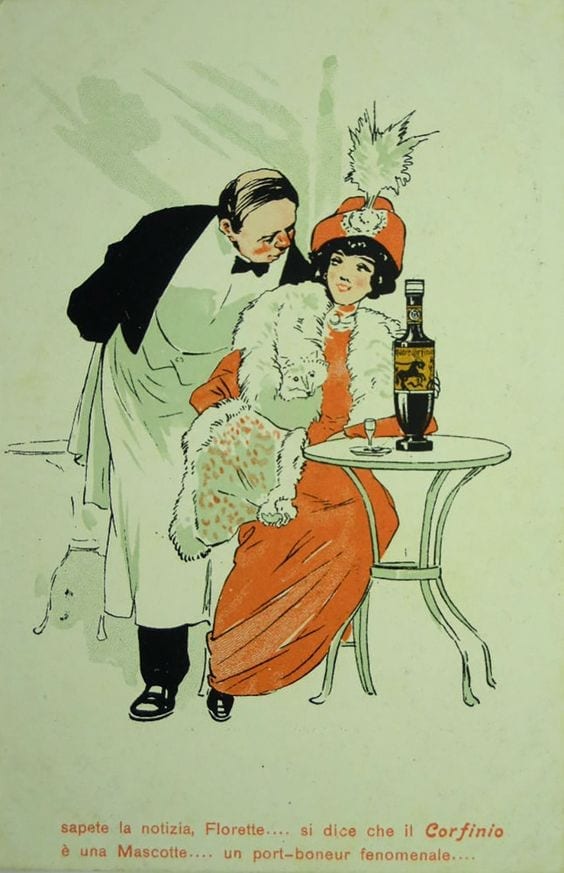

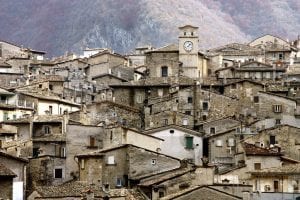
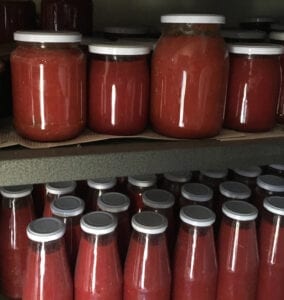

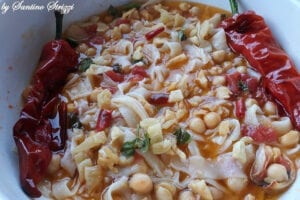
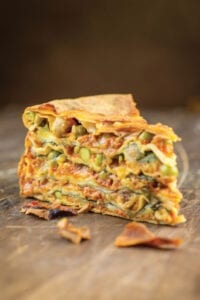
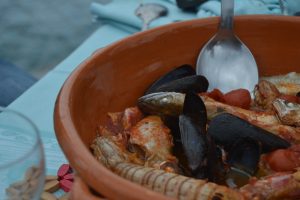
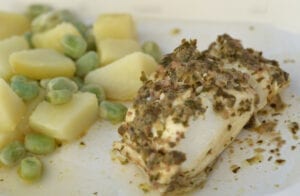
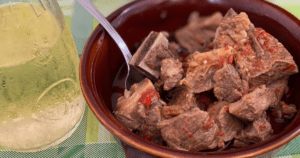
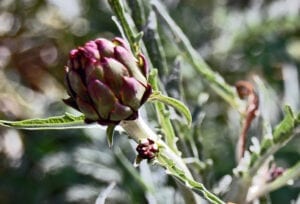
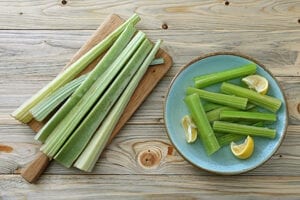
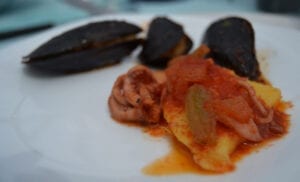
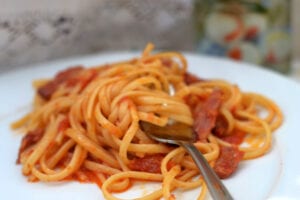
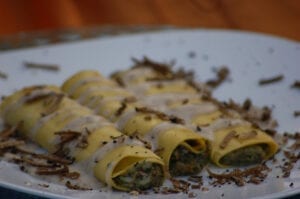


Genziana….. my favorite…!!! <3
Thank you, Sammie! You also need to include Liquirizia. My favorite before bedtime!
I had it for the first time in ice-cream this summer delicious, which is your fav brand and why and I’ll add a footnote Joyce.
Gee I don’t know. I am back in the US til April and the bottle is in Casalbordino!
When you’re back, it will give you an excuse to resample it! 🙂
Manfredo’s nocino is my favorite!
We tasted many homemade versions of these when visiting family in the Montesilvano
Much as I love ALMOST everything Abruzzese, the liqueurs just don’t do it for me….my mother-in-law’s aperitivo of choice was Rosso Antico – I don’t know if it still exists.
I’ve never had that Carolyn what did it taste of?
Hard to describe – pleasant. It wasn’t necessarily Abruzzese though. Just that I always associate it with my first Abruzzo experience in 1969.
If we’re all in Pianella together in August, we NEED to go find the Bocconotti with the scurchjiata
Bring on the ratafia!
Just finished making up a batch of that Christmas cookie filling she mentions in the last paragraph. Smells so good!
I made some yesterday too, it is the most delicious smelling dough isn’t it!